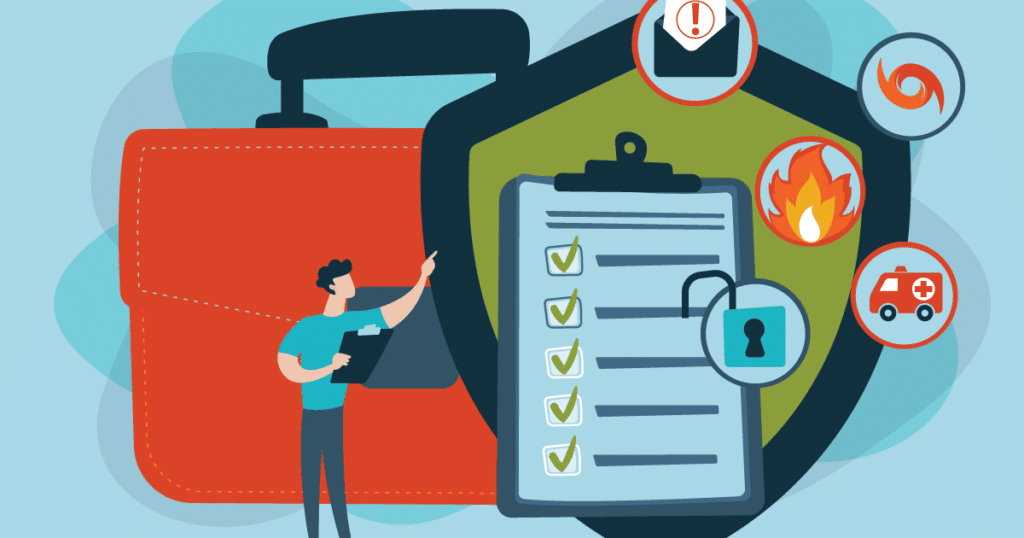While living in New York, we experienced a completely unexpected power outage in August 2003. The outage affected fifty million people and completely shut down the city. For hours, we were without power and our daily lives were completely interrupted. At the time, we had no go bags or disaster preparedness training. We didn’t have flashlights for everyone or bottled water. We lit candles like we lived in the 1700s. We had some non-perishable food, but if the power outage lasted any longer than it did, we would have faced a serious problem.

Twenty years later, we experienced another unexpected power outage in our city. The power outage lasted eight hours and, like the one in 2003, totally shut down everything. However, unlike the previous power outage, we were prepared. All of us had flashlights, backup power for our cell phones, and non-perishable food. Additionally, both our cars were fueled up and so we didn’t have to worry about long lines at the gas station and would have been ready had the need arisen to evacuate. Comparing both experiences, I would say being prepared made us more calm and ready.
Here’s the reality: Power outages can occur at any time, leaving us without the modern conveniences we’ve grown accustomed to. The lack of electricity can be quite debilitating, especially when it lasts for an extended period. A power outage can occur for a variety of reasons, including severe weather, equipment failure, and human error. While we can’t control when a power outage will occur, we can control how prepared we are for it.
Let’s discuss disaster preparedness for a power outage. We’ll cover everything from what to do before a power outage to how to stay safe during one.
Please note that this content is reader supported. If you click on our links, we may earn a commission. Thank you!
Prepare an Emergency Kit

The first step in disaster preparedness for a power outage is to prepare an emergency kit. An emergency kit should contain everything you need to survive for at least three days without power. Here are some of the things you should include in your emergency kit:
- Non-perishable food: Canned food, energy bars, and dried fruit are excellent options.
- Water: You should have at least one gallon of water per person per day.
- Flashlights and batteries: Make sure you have enough flashlights and batteries for every member of your household.
- First aid kit: Include bandages, antiseptic, and any medications you need.
- Blankets: Make sure you have warm blankets or sleeping bags, especially if it’s cold outside.
- Portable charger: A portable charger can be a lifesaver if you need to charge your phone.
- Cash: You may not be able to use credit cards during a power outage, so it’s a good idea to have cash on hand.
Backup Power Sources
Having backup power sources can make a power outage much more manageable. Here are some options for backup power sources:
- Portable generators: Portable generators can power essential appliances, such as refrigerators and sump pumps. Make sure you follow safety guidelines when using a generator, such as keeping it outside and away from windows and doors.
- Solar-powered chargers: Solar-powered chargers can charge your phone, tablet, or laptop using the power of the sun.
- Power banks: Power banks can charge your phone or other devices when there’s no electricity.
- Uninterruptible Power Supply (UPS): A UPS is a device that provides backup power to electronics in case of a power outage.
Have a Plan in Place

It’s essential to have a plan in place for what to do during a power outage. Here are some things to consider when making your plan:
- Communication: Make sure you have a way to communicate with other members of your household, such as a two-way radio or walkie-talkie.
- Evacuation: If you need to evacuate, make sure you know where to go and how to get there. Have a map of your area and a plan for transportation.
- Medical needs: If anyone in your household has medical needs, make sure you have a plan for how to meet those needs during a power outage.
- Pets: If you have pets, make sure you have a plan for how to take care of them during a power outage.
Protect Your Home
During a power outage, there’s a risk of damage to your home. Here are some things you can do to protect your home:
- Turn off all electronics: Turn off all electronics, including your air conditioner, furnace, and water heater. This can prevent damage from power surges when the power comes back on.
- Unplug electronics: Unplug all electronics, such as your TV, computer, and appliances. This can also prevent damage from power surges.
- Use surge protectors: If you can’t unplug an electronic device, use a surge protector to protect it from power surges.
- Keep the refrigerator and freezer closed: Keep the refrigerator and freezer closed as much as possible to keep the cold air inside. If the power outage lasts for an extended period, consider transferring perishable items to a cooler with ice.
- Use candles safely: If you’re using candles for light, make sure you use them safely. Keep them away from flammable objects and never leave them unattended.
Stay Safe During a Power Outage
During a power outage, it’s essential to stay safe. Here are some tips for staying safe:
- Stay indoors: If possible, stay indoors until the power comes back on. This can protect you from downed power lines and other hazards.
- Stay away from downed power lines: If you see a downed power line, stay away from it. Call your power company to report it.
- Don’t use gas-powered generators inside: Using a gas-powered generator inside can lead to carbon monoxide poisoning. Always use generators outside and away from windows and doors.
- Be careful with candles: Candles can be a fire hazard, so use them with caution. Keep them away from flammable objects and never leave them unattended.
- Use caution with food and water: During a power outage, food and water may become contaminated. Be cautious about what you eat and drink.
- Stay warm: If it’s cold outside, dress in warm layers and use blankets to stay warm.

Be Prepared
In conclusion, disaster preparedness for a power outage is essential. By preparing an emergency kit, having backup power sources, having a plan in place, protecting your home, and staying safe, you can make a power outage much more manageable. Remember to always follow safety guidelines and stay informed about the situation. With these tips, you can be set for power outage preparedness.
–
If you enjoyed this page, please check out the rest of our disaster preparedness series:
- Be Prepared: A Guide of What to do During a Blizzard
- Earthquake Preparedness: How to Stay Safe
- Staying Safe: What to do During and After a Flood
- Hurricane Preparedness: Protecting Your Home and Family
- Surviving the Storm: Tips and Strategies for Tornado Readiness
- Living Near a Volcano: A Comprehensive Guide to Volcano Eruption Preparedness
- Don’t Get Caught Off Guard: Essential Steps for Wildfire Preparedness
